What to stick on the sole to... What can I do to prevent my shoes from slipping? Wise advice.
First, let's find out which shoes are non-slip. To do this, when choosing shoes, pay attention to their soles. Your shoes will not be slippery if:
- the sole has a high tread pattern;
- the surface of the sole is convex and porous;
- The sole is well rubberized.
If you got an unlucky ticket and you still bought slippery shoes, or your old shoes have worn down and become slippery, do not rush to get upset. There are many proven methods that will return you to the feeling of solid ground under your feet.
"Folk" methods
Glue and sand (or Glue and sandpaper)
Apply Moment glue to the sole and before it dries, place the shoes in the sand and press down a little. Leave to dry. In the case of sandpaper, cut out pieces and glue them to the sole in the toe and heel area. Instead of Moment, you can also use epoxy glue.
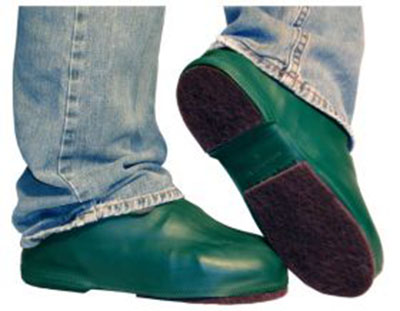
Patch
One of the most popular, but least short-term ways to deal with slippery shoes. Take a wide roll of cloth-based plaster and glue it crosswise to the sole. To make the patch less noticeable when walking, color it over with a black alcohol marker.

old stocking
Set fire to the old one nylon stocking and drip the melting nylon onto the sole. As a result, small, thorn-like tubercles are formed. The procedure must be repeated three times a season.
Hot soldering iron
Using a hot soldering iron, make notches on the sole. Unfortunately, it is no longer possible to restore the integrity of the sole, but the method is quick and effective.
Silicone spray
After cleaning the sole first with a wire brush or sandpaper, apply silicone spray to the sole, wait until it is absorbed, and repeat the procedure. Leave the shoes to dry for 48 hours before wearing them. This method is more suitable for slippery shoes.

Water repellent
Apply a water-repellent shoe protectant to the soles. This will make the sole less wet, and therefore less slippery. I note that you can use the same remedy when your foot slips in your shoes.
Shoe conditioner
To prevent shoes from slipping due to dry soles, use shoe conditioner.
Professional approach
You can solve the problem of slippery shoes by contacting a shoe workshop, where they will offer you anti-slip shoe prevention - rubber pads. This method, however, is not suitable for ridged shoes.

You can also purchase special anti-slip pads in sports or travel stores. There are both unisex models and for high-heeled shoes and children's shoes. Linings of various compositions are offered: rubber, with metal elements and even chains.
One of the most unpleasant and traumatic situations that we face every winter is black ice.
It is very easy to slip and fall on an unprotected piece of soil, but the consequences can be quite serious - from a simple sprain or dislocation to an open fracture of a limb. Elderly people are especially at risk, whose coordination, for various reasons, may be somewhat impaired.
How to find a solution to this problem, because not leaving the house or constantly moving around by transport, depriving yourself of the joy of walking, is not an option. In order to prevent sad developments, you need to take care of your comfort and safety in advance, including taking all measures to prevent your shoes from slipping in winter.
You need to think about how comfortable winter shoes will be to wear in advance, even when purchasing new couple warm boots or boots.
Remember a few rules for choosing new shoes for cold weather, from the point of view of safe wearing:
- The sole should be made in the form of a tread with a deep pattern. It’s even better if the stripes go in different directions - this will help provide stronger grip on frozen asphalt.
You will have to give up shoes with a smooth outer surface of the foot - such a model will ensure that you fall on the first slippery section of the road.
- Choose models from those manufacturers who adapt their products to the conditions of snowy and long winters. High-quality and safe shoes can be purchased from shoe manufacturers in Russia, Scandinavia, and Canada.
- Please note that when exposed to sub-zero temperatures, the sole material hardens and becomes more slippery. Optimal choice boots will be made of polyurethane, rubber or polypropylene.
- After trying on a new pair, don’t hesitate to check it for grip right in the store. Walk on the tiles, try rolling on your feet and evaluate how you feel while wearing them.
If you feel that already on the tiles your legs are moving in different directions, it means that you will not be able to walk even a meter on the frozen ground.
- Refuse to winter period from stiletto heels, high platforms or pointed toes. For daily walking, choose products with a stable heel or a solid base of sufficient width.

Note! When choosing a model for the winter, you don’t need to focus solely on its visual appeal.
remember, that warm shoes must be functional, made of quality materials, capable of keeping your feet warm and allowing you to feel comfortable outside in any weather conditions.
If you have already purchased winter shoes and are sadly convinced that the soles slide on the ice and prevent you from moving fully, there is no need to be too upset.
We will suggest some folk tricks that can protect you from ice:
| Way | Action | Durability |
| Glue | Apply Moment or other super-resistant glue to the sole. Let it dry and vigorously rub the applied layer with sandpaper until roughness appears on the surface of the sole. |
No more than one week |
| Patch | The fastest, but also the most short-lived method, which is suitable only for dry frosty weather. Simply cover the clean platform of the boot with a regular medical adhesive plaster, placing the strips crosswise |
12 o'Clock in the noon |
| Felt | Cut a piece of felt that completely follows all the curves of the shoe insole. Glue the material on the outside or nail it with the smallest nails. With the same success, felt can be replaced with sandpaper |
About 10 days |
| Relief | If the sole does not have any pattern, you can apply the relief yourself with any sharp object - a knife or a nail. The main thing is to do this carefully so as not to pierce the material through, otherwise the shoes can be thrown away |
Depends on the quality of the applied drawing |
| Screws | Select short screws with a wide head, carefully screw them into the sole and correct the excess length. Keep in mind that when walking in such shoes on a wooden or other type of floor, there is a risk of scratching the coating |
For the entire wearing period |
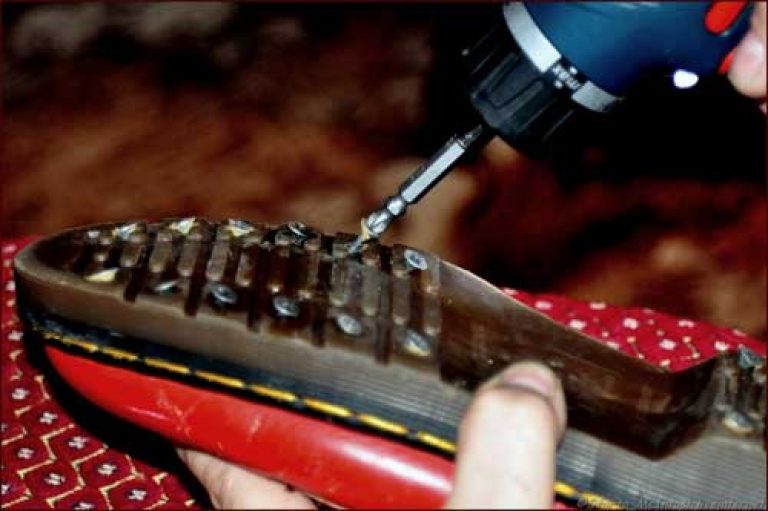
In addition to home preparations, you can go to a shoe shop, where you will be offered to do “prevention”, that is, to install heels made of metal or rubber.
Or you can independently purchase ready-made protective pads in the shoe department, which are put on the toe and back of the boot, preventing slipping.
Rules for traveling in icy conditions
In addition to special devices designed to make the sole more stable, you must follow the rules of behavior on the street in icy conditions:
- Take your time when walking and do not lift your legs high.
- Step on your entire foot, trying not to shift your body weight from heel to toe, as we usually do when moving under normal conditions.
- When going down or up a slippery slope, do not walk straight, but place your feet in a herringbone pattern, placing your feet diagonally to the slope.
- Don't keep your hands deep in your pockets outerwear. It is better to use them for additional balance when walking.
- If you still can’t resist and feel like you’re starting to fall, don’t put your hands forward and try not to land on your tailbone. It is best to press your elbows to your body and turn around a little to fall on your side - thereby you will protect your body as much as possible from serious consequences.
Note! The best reflexes, including how to fall correctly, can be obtained in sports sections and clubs. Don't ignore active image life, go in for sports, and then your body will become more trained, and your reaction will be lightning fast.
What to do if your foot slips in your shoes?

If you regularly wear shoes that do not fit well on your feet, you will not only not be able to move beautifully and safely, but you will also develop such unpleasant phenomena as calluses, corns or seals on your toes.
What can you do to prevent your favorite shoes, shoes or boots from chafing and causing constant discomfort?
There are several ways to deal with slipping feet in shoes:
- Adhesive silicone insole. This simple option will help reduce the volume of the shoe, securely fix your foot inside and reduce fatigue from constantly being in shoes.
- Anti-slip heel- excellent overlays from modern materials, installed on the back of the shoe. Depending on your size, as well as the required filling area, you can choose backdrops of various parameters and thicknesses.
- Special inserts on the toe. There are soft fabric pads available that can mold to the front of your shoes and fit comfortably into the back of your boots. This way you can reduce the size to the required size and prevent chafing on your fingers.
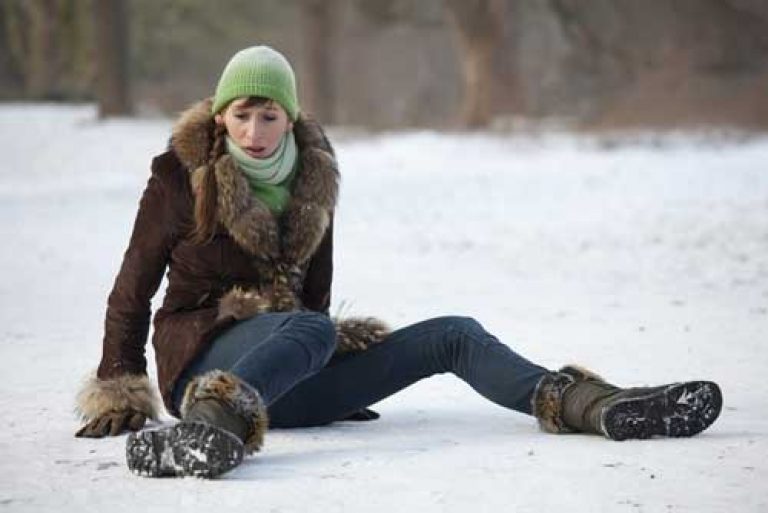
Note! To avoid discomfort when wearing, select shoes according to size chart manufacturer, not tight and not dangling on the leg.
It is better to go for new clothes in the afternoon; it is at this time that the foot swells a little and, as a result, increases in volume. Should be considered this fact when buying a new pair, so that wearing it is always pleasant and comfortable.
Use our advice, and then even the most sliding shoes will no longer be a problem for you.
Useful video
Discussion: 3 comments
A snowy winter always means ice, bruises and sprains. And in case of an unsuccessful fall, there may be a fracture.

And as soon as the water freezes outside, we look for ways to calmly walk on ice and not think about slipping at all.
To avoid traumatic situations, first of all, make the right choice winter shoes, or rather, the soles. It should not only be stable, but also thick with a corrugated surface.


ICE ACCESSES.
If you have beautiful and fashionable shoes, then thick soles are out of the question. For this option of winter shoes, you can purchase special devices that will prevent you from slipping on the ice.

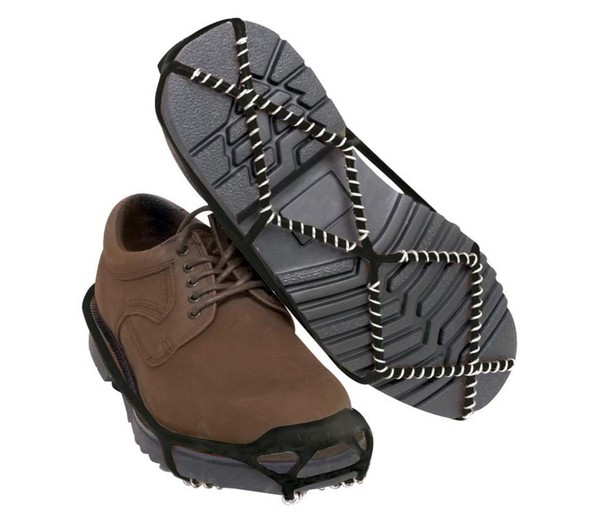



For owners of shoes with heels, there are also such overlays, so that your beautiful gait will not suffer.
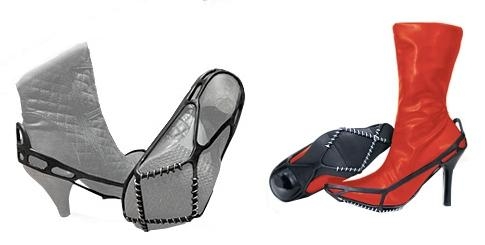

But the price of such “salvation” is very steep. But don’t rush to get upset, in this article we will look at several cheap options.
PREVENTION.
Eat good proverb: “Prepare your sleigh in the summer” and this also applies to shoes. Before the winter season, be sure to prevent the soles of your shoes. The shoe shop will put on any overlay for you, but it is preferable to choose one with deeper treads.


This method of shoe care is the most effective and durable! Moreover, the shoes are completely preserved, which means they will last longer.

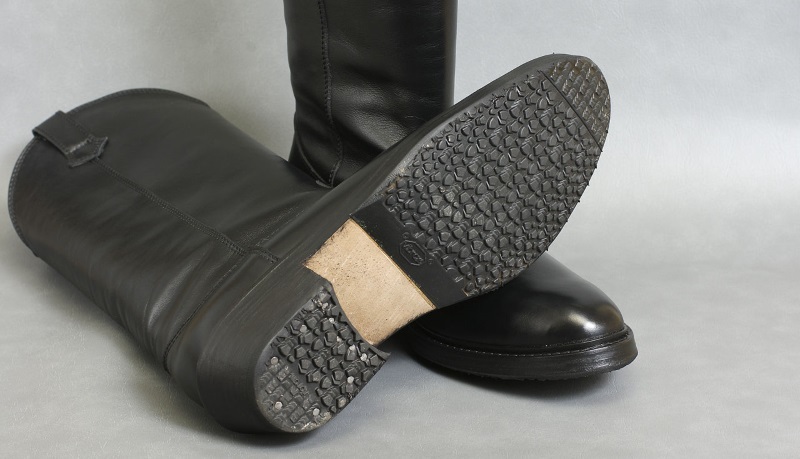
STICKING.
If you don’t have time at all to visit a specialist or purchase additional pads, then there are several simple ways gluing different materials.
- Band-Aid.
The most common anti-slip method is an adhesive plaster. Cut the wide adhesive plaster into strips and glue it to the sole. This option is not entirely durable and you will have to repeat this “operation” in a day or two.


- Sandpaper.
Another method for gluing is sandpaper. Buy the coarsest sandpaper and be sure to have a woven backing. Sandpaper on paper will wear out faster.
Also, cut the sandpaper into strips or squares and glue it onto the sole with the hard surface facing up. This will last you longer than adhesive plaster.

- Felt.
And here old felt boots or purchased felt will help you. It also needs to be glued to the sole. But it will wear out very quickly, and you will need to stick it on often.

- Coarse sand.
To do this you will need sand or small pebbles. Lubricate the sole generously with superglue and sprinkle it with the prepared materials. This option will be practical and will provide you with the greatest stability and grip on ice.

BOLTS.
And this option is only suitable for men's thick soles. You simply screw them into the sole and provide yourself with a comfortable walk on icy conditions.

But all these options only spoil the shoes. And buying new winter shoes every year is very expensive. Therefore, there are several more options for preventing slipping that do not damage the sole at all.
POTATO.
Before you go outside, rub your soles raw potatoes. The shoes will not get damaged, but you need to polish them every time before going out.

ROSIN.
The safest way to treat the sole, which will not damage it at all, is rosin. Just use natural pine resin. It is of higher quality and has a light pine scent.
But it will take a very long time to rub the sole. It is best to do this procedure in the evening.

Use any method convenient for you and don’t fall!
Very soon our streets will be covered with snow and the sidewalks will be covered with ice. And almost each of us will remember how he slipped and fell on a soft spot and received bruises, and some even suffered fractures. Now it’s time to think: how to prevent shoes from slipping on ice?To prevent shoes from slipping, they have come up with a variety of different ways and devices. Each of them has its pros and cons. But the most important thing is a minimum of costs and maximum efficiency to facilitate movement on an icy path. Let's try to understand this issue so that each of you chooses your own method of protecting yourself from falls on ice.
When buying winter shoes, you should definitely pay close attention to their soles. Shoes with smooth soles are not suitable for winter because they do not have traction in icy conditions. The best option in case of ice, it is a corrugated sole with good treads. Shoes like winter car tires have good grip and will give you confidence in your gait in slippery conditions.
So, let's look at some acceptable ways to prepare shoes for ice.
Method one
Apply “Moment” type glue to the heel and to the sole closer to the toe. We cut out pieces of the required sizes from coarse waterproof sandpaper on a fabric basis (you need to trace the sole with a pencil) and glue it to the sole. Instead of sandpaper, you can sprinkle coarse sand on the glue, which will also create a sandpaper effect after the glue dries. Service life is a week. Before going out, you can rub the smooth sole with coarse sandpaper to make the surface rough.
Method two
We buy a roll of fabric-based adhesive plaster at the pharmacy. Glue strips of plaster crosswise onto the dry and warm sole and heel. This method is simple and affordable, but not durable, as it only lasts 2-3 days. But you can use it at any time before going outside. If the adhesive plaster is wide, then simply stick pieces of the appropriate size on different parts of the sole.
Method three
Simple and effective, but funny. We buy regular cheap men's socks 3-4 sizes larger than your shoes. We pull these socks directly onto shoes or boots. Everyone is laughing, but at least it’s okay for you, because now they will fall, not you.
Method four
There is now a wide selection of ice drifts and ice accesses in stores, markets and on the Internet. Dozens of different designs. There are powerful ones, but cumbersome for climbers. There are elegant ones for women's shoes. And there are simple budget ones for grandmothers. Choose according to your taste. The main thing is to pay attention to the reliability of the fastening, because they must withstand the weight of your body.
And finally, tips on ice safety.
1. If possible, walk where there is something to grab and hold on to.
2. Elderly people in icy conditions need to use canes with special anti-ice tips.
3. Don't walk with your feet up, but glide as if you were on skis.
4. When walking, do not keep your hands in your pockets, as your hands will help you balance.
How to fall safely?
1. When falling on your side, you need to put your hand under you, and not throw it towards you. This way you will avoid hand injury.
2. When you fall on your back, try to regroup, lower your chin to your chest and draw your legs. This will prevent traumatic brain injury.
Be healthy and attentive on the winter streets!
Constant temperature changes and heavy traffic on the streets lead to ice. It seems like it’s not a big deal, but if your shoes are slippery, a lot of problems and obstacles to normal movement arise. And something needs to be decided about this. Of course, you can buy a new women's and men's shoes. But this is a radical decision. What to do if your shoes are slippery - read on.
1. If slippery shoes- treat its sole with sandpaper or rough sandpaper.
This procedure should be repeated periodically. 
2. If shoes are slippery- stick pieces of sandpaper on its soles. You can stick it all over your foot. If they are a different color from the sole, paint over them with a marker of a suitable shade, so as not to attract the surprised glances of passers-by.
3. If shoes slip- Apply glue to its surface. Both regular “Moment” and epoxy glue with a hardener will do. True, you will have to tinker a little with the second option. Before applying glue to a slippery sole, it must be degreased. You can use acetone for this.
4. If shoes are slippery- stick a fabric-based patch on its sole. True, the product is not durable and not the most reliable, but it’s better than nothing. Don't forget to paint over the patch with a marker so it's less obvious when walking.
5. If slippery shoes- rub it with raw potatoes (peeled).
5. If shoes slip- Apply super glue to it and sprinkle sand or salt on top. True, when walking, you can begin to make unpleasant sounds, a kind of creaking. And unpleasant marks will remain in the premises, especially on the parquet, and not even in the form of fallen sand or salt.
6. If slippery shoes- melt an old nylon stocking and drip it onto the sole. You will get some kind of spikes that will make the shoes less slippery without harming the sole.
7. If shoes are slippery- hiss her. However, this method is only suitable for outdoor boots. They will make a clattering sound indoors and can also damage the floor.
8. If shoes slip- put a nylon sock or golf on top. Of course, the method is radical and not at all aesthetic, but it is effective. You can also make special cases. Suitable for people who care primarily about their safety and health.
9. If shoes are slippery- glue special stickers made of vulcanized rubber to the sole. Pre-clean the sole and degrease it.
 10. If slippery shoes- buy special ice drifts or ice access devices. True, before entering the premises they will need to be removed, especially for options with spikes.
10. If slippery shoes- buy special ice drifts or ice access devices. True, before entering the premises they will need to be removed, especially for options with spikes.
11. If shoes slip- buy anti-slippers. These are rubber clamps that fit onto the sole and prevent it from slipping.
12. If slippery shoes- apply a heated metal rod to its under-relief pattern. Of course, this option is not suitable for leather soles.
13. If shoes are slippery- do preventive maintenance on the soles. But it must be special, so it is better to check with shoe workshops for what purpose it is needed. Conventional prevention slips no worse than the sole of the shoe itself.
14. If shoes slip- stick a piece of felt on the heel or heel.
If shoes are slippery- something needs to be done urgently about this. Don't wait for the first fall. It's better to protect yourself in advance. We hope you find the above tips helpful.
984












